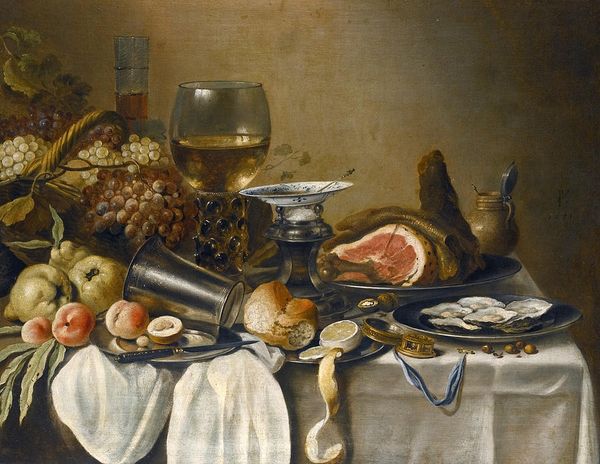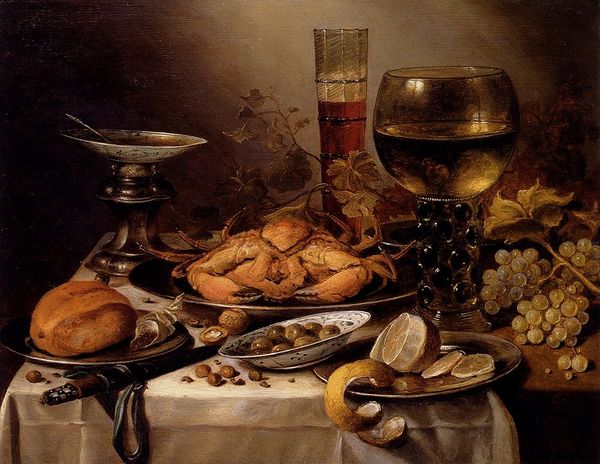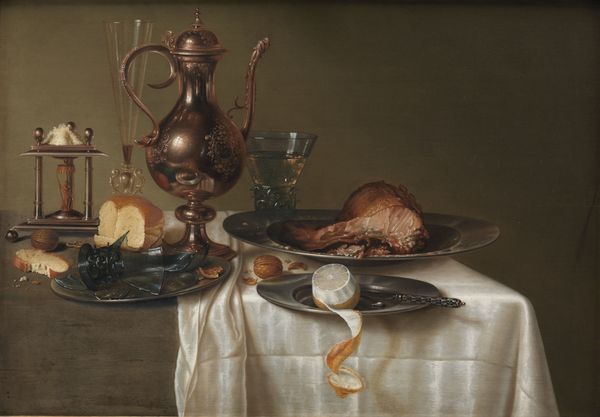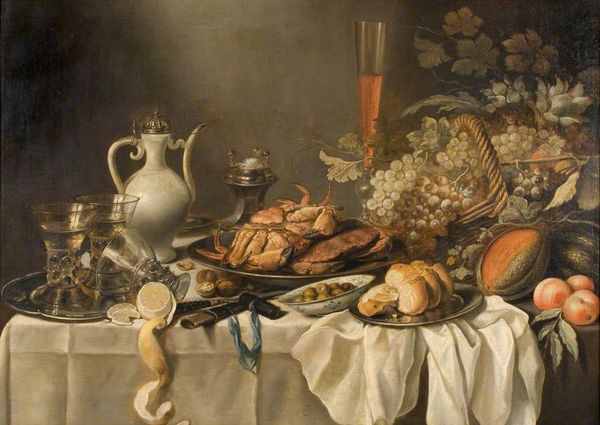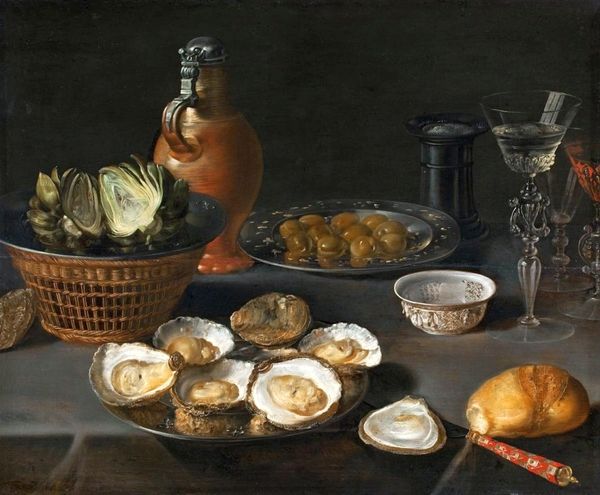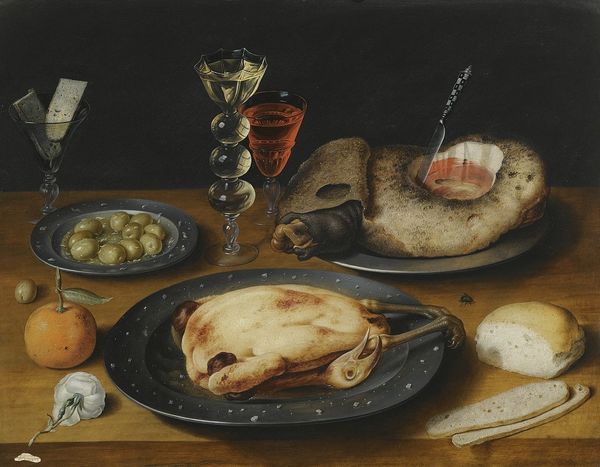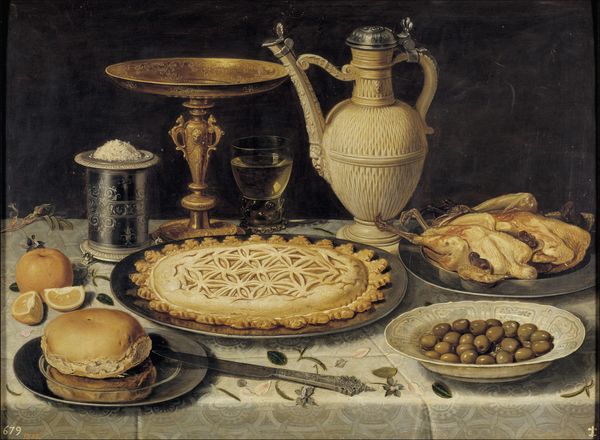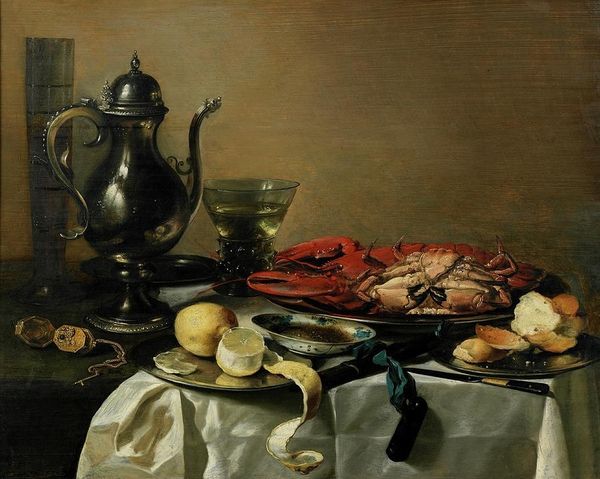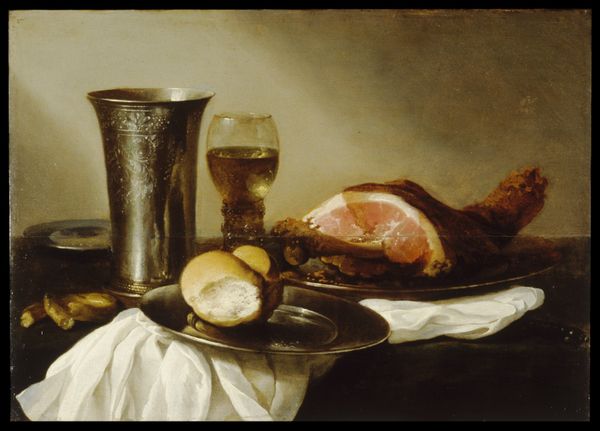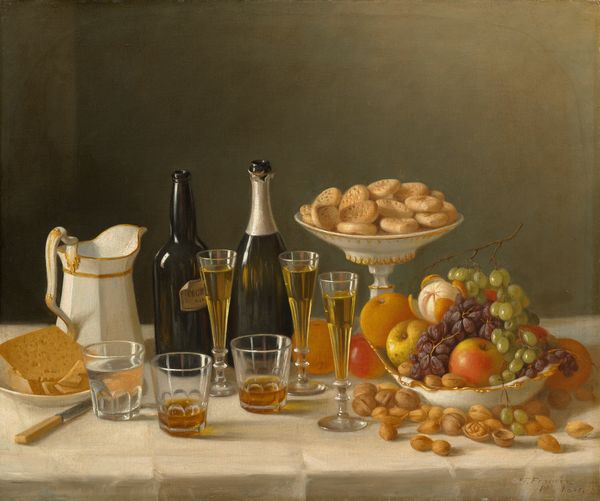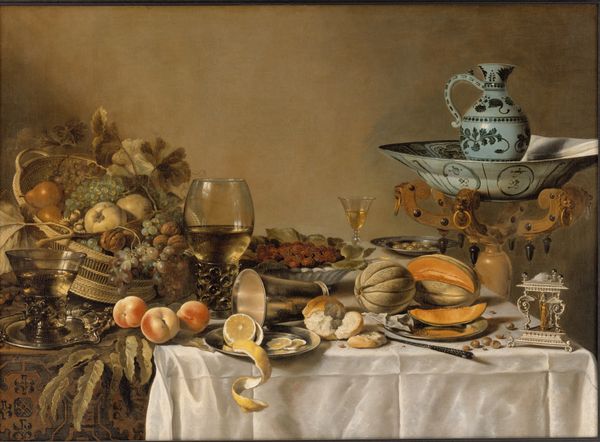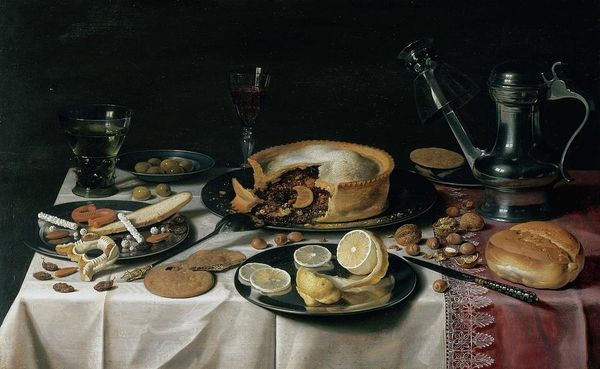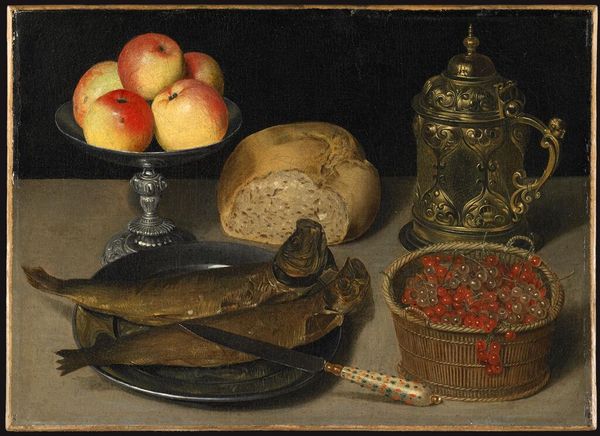
oil-paint
#
dutch-golden-age
#
oil-paint
#
oil painting
#
realism
Copyright: Public domain
Editor: So, here we have "Still Life with Peacock Pie" by Pieter Claesz. It's an oil painting, and even though it's hard to pin down an exact date, we know Claesz. was part of the Dutch Golden Age. There's something darkly opulent about this table spread. What strikes you most about this piece? Curator: Oh, the sheer theatricality of it all! Claesz is essentially crafting a mini-drama, isn’t he? Look at how light catches the metallic sheen of that ewer versus the matte surface of the pie. It's almost a memento mori, a reminder of our own fleeting existence, elegantly presented in a deceptively delicious package. Don't you think the peacock—such an ostentatious bird, now… well, *pie*—is making a statement about vanity? Editor: I see what you mean! All those luxurious details...almost a bit too much? Curator: Precisely! That tension between abundance and decay. Think about what's implied here. Did someone prepare this feast but then suddenly had to leave? The lemon peel casually draped suggests a passing of time, as does the wilting rose in the peacock's beak. Is it a celebration cut short, a reflection on wealth, or perhaps simply a clever bit of culinary art history? Editor: That's fascinating! It makes me see the painting as more than just a pretty picture; there's a story unfolding. Curator: Indeed! Every element whispers something. The spilled nuts suggesting carelessness or excess... Claesz has an eye that reminds you not just to appreciate beautiful details, but also consider that beyond, they exist inside this fragile painting where things will stay, but, ultimately, *everything* eventually ends. Editor: That's such a great point. It feels like there's so much more to see than meets the eye at first glance. Thanks for your insight!
Comments
No comments
Be the first to comment and join the conversation on the ultimate creative platform.
